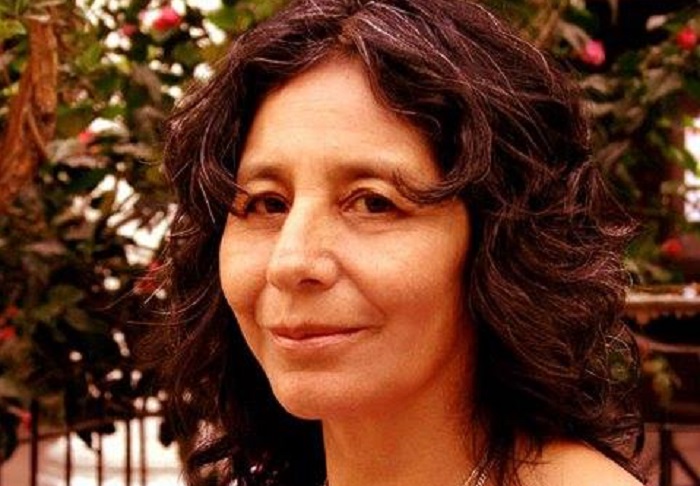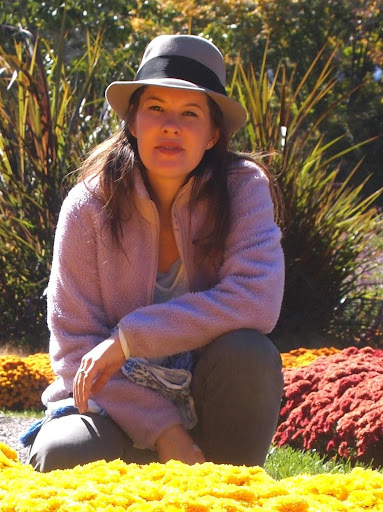
Dulce naranja dulce luna © Gloria Mendoza Borda
Introduction, selection and translation from Spanish © Andrea Echeverría
If you prefer to read this as a PDF, click here
Gloria Mendoza Borda (1948) is a renowned Peruvian poet from Puno who currently resides in Arequipa. She joined the Carlos Oquendo de Amat Group in the 1960s and has published Wilayar (1971), Los grillos tomaron tu cimbre (1972), Lugares que tus ojos ignoran (1985), El legendario lobo (1997), La danza de las balsas (1998), Dulce naranja dulce luna (2001), Mujer, mapa de música (2004), Q’antati deshojando margaritas (2006), Desde la montaña grito tu nombre(2013), Amtasiña (2013), and Mi abuela, mi patria (2018). In the three poems below, included in Dulce naranja dulce luna (2001), Mendoza represents how plants communicate their memory. Three of them: the cherry tree, the avocado tree and the honeysuckle. These texts provide an ecological vision based on Quechua-Aymara forms of knowledge that transcend the anthropocentric perspective. To initially approach these poems, perhaps the best thing to do is to ask yourself: what do these plants communicate? What vision do they convey about the passage of time? What forms part of their memory? I invite you to read these poems within the historical framework of the political violence that affected all of Peru, and especially provincial cities and rural communities in Peru during the Conflicto Armado Interno (1980-2000). As you will notice, these plants cry and suffer the passage of time, nostalgically remember the past, and communicate their experience about traumatic episodes that happened in this context.
~~~
The Cries of the Cherry Tree
I am the old cherry tree
who saw them grow
as artists
I also knew how to be an artist
I also knew how to be a river
phosphorescent birds
would stay in my currents
they made nests with dazzling weeds
and they sang to life
my roots
keep moving forward
through the underground
I cry in the name of mother earth
in the skin of the boys
suffering
the desolation of the courtyard
I cry
on the posters
that they hung
on my mutilated arms
“Protest against the Cherry Tree’s Death”
I cry
because I don’t know the reason
why did they destroy my branches
I cry
in the name of the white doves
(those who came from the Plaza Mayor
they will no longer be able to shelter from the sun
under my shade)
I cry
because the sound of the boys’ pan flutes and guitars
stayed in me
they played in my lap
during the sunsets
however
I exist
in our memory
I exist
I am the invisible cherry tree
that keeps them company
my fruits used to adorn
girls’ heads
that took shelter
in my skirts
why did the ax become enraged
with my silence?
from my invisible image
I predict life
I light the fire
my currents grow
I also feel bird
I also feel man
I also feel artist
I also feel river.
Listen to Gloria Mendoza reading her poetry in Spanish
Looking for the Avocado’s Path
In these times
I did not bear fruit
it’s true
but my leafy green inspired
announced a time of hope
I tried to get closer to the sky
I walked more than a hundred years
downward
towards the immensity
I flourished on the cliffs of silence
only the trace of my forms remained
the semi-destroyed sculpture
looking for my lost path
and the dismayed look
of my friends
I am the result
of changes and death.
The Honeysuckle’s Agony
Mother and lady
centennial
I cry my green agony
drunken my flower
numbs
the morning
I scream
I implore
they don’t listen to me
I sing in the language of the green
dry
and weak
my skin
in other times
my fruit was honey
as a child
the sculptor Jorge Mendoza
took one of my branches
and soon
ran with my scent
looking for his mother
I was born
before all of you
‘the house of art’
came later
in my roots
lives the story
of men
that passed through
and left
I still exist
a cable
covers my fingers
crosses my feet
I hope the crows
don’t eat my leaves
in each contour
of my path
there is a wire
at each knot
I break and twist
I look at the blue sky
the song of birds
accompany my green symphony
wild dance
my heart
the wound
it won’t let me walk
a terrifying shadow
covers my eyes
from the sun
A white dove
drinks water
in the pool
in the well
the mirror
of my image
the water
doesn’t reach
my insides
I’m hung
from the throat
imprisoned
forgotten
mutilated
nightfalled
hanged
scrawny
stretched
withered
disoriented
scared
threatened
bitten
without truce
oh perfection
I cry my green
from so much spiraling
death stalks me
but does not find me
here I am friends
rooted
ancient
lonely
silent witness
youthful dreams
students go on strike
for struggles and triumphs
for permanent creation
for happiness
alone
I cry
my green agony
hungry
imprisoned
centennial.
For more about Gloria Mendoza
- “Gloria Mendoza Borda and David Robertson in conversation with Ingrid Bejerman”, Hay Festival Arequipa 2021.
About the translator

Andrea Echeverría Langsdorf is an Associate Professor at Wake Forest University. She earned her doctoral degree in Latin American Literature and Cultural Studies at Georgetown University. She is the author of Yeyipun en la ciudad. Representación ritual y memoria en la poesía mapuche (Editorial Universidad de Guadalajara, 2021) and El despertar de los awquis: migración y utopía en la poesía de Boris Espezúa y Gloria Mendoza (Paracaídas Editores & UNMSM, 2016), as well as of several academic articles published in journals such as Latin American and Caribbean Ethnic Studies, Latin American Research Review and the Canadian Journal of Hispanic Studies. She is currently working on a book that studies Mapuche visual art.
Dulce naranja dulce luna © Gloria Mendoza Borda
~ Siwar Mayu, October 2023
Introduction, selection and translation © Andrea Echeverría
